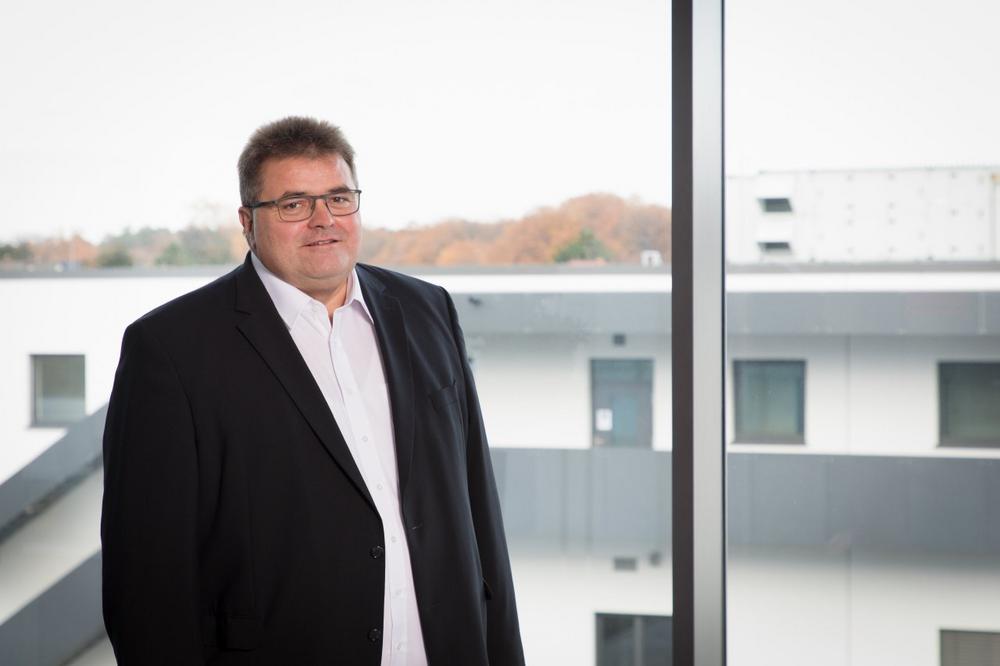The world’s leading warp knitting machine manufacturer continues to focus on the ecological advantages of warp knitting over weaving. Only recently, it arranged for a comparative energy consumption study to be carried out by the independent consulting firm Gherzi. The results were already available at the beginning of this year, but are gaining in explosive power now: the possible savings in electricity are not only remarkable in terms of CO2 emissions, but also a real cost advantage in view of exploding energy prices. Ulrike Schlenker from my TEXTILE NEWS wanted to know more about the study and asked Christof Naier, President of KARL MAYER’s Warp Knitting Business Unit.
US: There are many electricity consumers in warp knitting and weaving mills, and they are globally positioned. How did you set the framework for the energy consumption study?
CF: We set clear process engineering limits. The study focused on warp preparation, the actual surface production as the main process, and the design of the production environment required for this in terms of humidification, air conditioning and lighting. In the weaving mill, sizing, which is usually indispensable, was also taken into account.
In the main process, the focus was on the use of electricity to drive motors and to generate air and water flows for the weaving machines.
Energy consumption data came from different textile companies, mainly based in India due to corona-related travel restrictions. In addition, we and other European textile machinery manufacturers provided input from internal performance measurements.
From the data, the amount of energy required per m² was determined for the comparison.
US: Which textile items were you looking at?
CN: For the study, we selected four product categories that are representative of both technologies. These were terry fabrics made of cotton, and linings, curtains and trouser fabrics each made of polyester or polyamide. In particular, warp knitted 4-way stretch apparel fabrics are currently in great demand. Elastic, crease-resistant and easy-care, they meet the trend for comfort and convenience when worn and washed.
The considered warp knitted and woven articles had comparable fabric parameters.
US: What were the results of the comparison of consumption data in the production of the goods?
CN: For warp preparation, fabric production and setting of the ambient parameters, significantly less electricity is required overall in the warp knitting mill than in the weaving mill. This applies to all product categories.
Particularly large differences can be seen in the energy expenditures for the main process, i.e. for pure machine operation. These are particularly well suited for technology comparison, as they are independent of location and therefore the same in all countries.
In terms of product groups, the advantage of warp knitting over weaving is greatest in the production of trouser fabrics. For the production of apparel textiles, warp knitting machines require only about one tenth of the energy consumed by weaving machines. In absolute terms, the potential electricity saving is 0.57 kWh/m².
US: What are the ecological savings potentials behind this figure?
CN: The positive effects on the environmental balance sheet, but also on the cost balance sheet, can best be illustrated by an example. An Indian company with 400 air-jet weaving machines and an average daily production of around 134,000 m² of these textiles can reduce its CO2 emissions by around 55 t per day by switching technology to warp knitting – with CO2 emissions of 725 g/kWh in India in 2019. /1/ Coal-fired power generation dominates the country’s energy mix.
In addition to less environmental impact, there are also lower electricity costs. At a price of 0.104 US dollars per kWh at the end of 2021, the savings potential is around 8,000 US dollars per day. Today, this amount is likely to be much higher. /2/
In addition, the previous output can be achieved with far fewer machines. With a 14-fold increase in daily production, 27 warp knitting machines can replace the previous 400 looms. /3/ Smaller machinery fleet requires less space and personnel. These are also significant advantages.
Of course, a change in technology requires consideration of other aspects. Against the background of rising energy costs, however, it is to be expected that the importance of energy consumption in the choice of production technologies will increase.
US: Thank you very much for the interview.
More information on the Gherzi study and the white paper can be downloaded at: https://my-textile-news.com/article/trends-innovations/sustainability/saving-electricity-through-technology-change
/1/ https://iea.blob.core.windows.net/assets/e4945633-ab7c-45cc-8e3a-aa74dd3de962/AirQualityandClimatePolicyIntegrationinIndia-Frameworkstodeliverco-benefits.pdf
/2/ https://de.globalpetrolprices.com/India/electricity_prices/
/3/ Gherzi: Compare conversion cost (mainly power related) of weaving and warp knitting, study for KARL MAYER, 24. 02. 2022.
KARL MAYER Holding SE & Co. KG
Industriestraße 1
63179 Obertshausen
Telefon: +49 (6104) 402-0
Telefax: +49 (6104) 402-600
http://www.karlmayer.com
Pressestelle
Telefon: +49 (6104) 402-274
Fax: +49 (6104) 40273274
E-Mail: ulrike.schlenker@karlmayer.com
![]()

